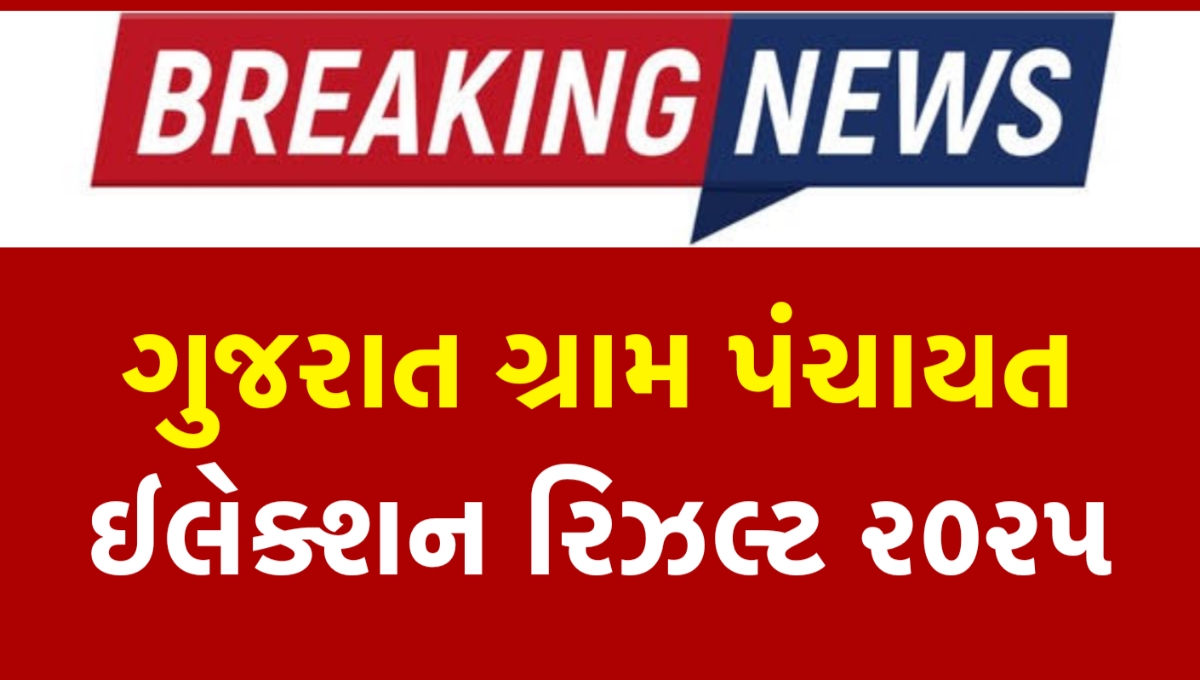The Gujarat Gram Panchayat Election Result 2025 have sparked widespread interest as they reflect the pulse of rural democracy in the state. Held on June 22, 2025, across 3,894 gram panchayats, these elections saw an impressive voter turnout of approximately 72%, showcasing the enthusiasm of rural voters in shaping local governance. With the results announced on June 25, 2025, this blog dives into the key outcomes, trends, and impacts of the elections, offering fresh insights for readers seeking comprehensive coverage.

Gujarat Gram Panchayat Election Result 2025
The Gujarat State Election Commission (SEC) conducted elections for 8,326 villages, with 3,894 gram panchayats actively participating in the polls. A notable feature of these elections was the use of ballot papers instead of electronic voting machines, emphasizing a traditional voting approach. Out of the total, 751 gram panchayats were declared “Samras,” meaning they elected their sarpanch and ward members unopposed through community consensus, a unique scheme by the Gujarat government that rewards such villages with special benefits.
The elections were significant as they were the first to implement a 27% reservation for Other Backward Classes (OBCs), following the Kalpesh Jhaveri Commission’s recommendations. This marked a shift from the previous 10% OBC quota, aligning with the Supreme Court’s directive to ensure proportionate representation.
Key Highlights of the 2025 Election Results
- High Voter Turnout: Despite scattered incidents and rainfall in some regions, the elections recorded a robust 72% voter turnout. Approximately 81 lakh voters participated to elect 3,656 sarpanchs and 16,224 ward members, underscoring the importance of grassroots democracy.
- Samras Panchayats Shine: The 751 uncontested gram panchayats under the Samras scheme highlight the strength of community-driven governance in Gujarat. These villages, which avoided competitive polls, will receive special incentives from the state government, reinforcing the appeal of consensus-based leadership.
- Peaceful Polling with Minor Incidents: The elections were largely peaceful, though stray incidents, such as the tragic accident in Mahisagar district that claimed two lives, and issues like ballot paper theft in Moti Handi village, led to repolling in two booths in Dahod and Sabarkantha.
- OBC Reservation Impact: The increased OBC reservation played a pivotal role in shaping candidate profiles and voter preferences, making these elections a landmark event in Gujarat’s local governance history.
- Non-Party-Based Elections: Unlike legislative or municipal elections, gram panchayat polls in Gujarat are not fought on party symbols. However, political affiliations often influence candidate support, with parties like the Bharatiya Janata Party (BJP), Indian National Congress, and Aam Aadmi Party (AAP) indirectly shaping outcomes.
Gram Panchayat Election Trends and Analysis
The 2025 Gujarat Gram Panchayat Election Results offer valuable insights into rural political dynamics:
- Rise of Local Leadership: The absence of party symbols allowed independent candidates and local leaders to shine, reflecting the electorate’s focus on community issues like water supply, infrastructure, and education.
- Impact of Samras Scheme: The success of 751 Samras panchayats indicates a growing preference for consensus-driven governance in rural Gujarat, reducing electoral conflicts and fostering unity.
- Voter Priorities: High voter turnout, despite challenges like rain and isolated violence, shows that rural voters prioritize local governance, which directly impacts their daily lives through schemes like road development, sanitation, and healthcare access.
- OBC Representation: The enhanced OBC reservation has diversified leadership, potentially paving the way for more inclusive policies in rural areas.
Gram Panchayat Result Live
The Gujarat Gram Panchayat Election Results 2025 are more than just numbers; they reflect the evolving aspirations of rural communities. With 3,656 sarpanchs and 16,224 ward members elected, these leaders will shape village-level policies for the next term, influencing critical areas like infrastructure development, education, and public health. The success of the Samras scheme further emphasizes Gujarat’s unique approach to rural governance, balancing democratic participation with community consensus.
For political observers, these results also serve as a precursor to larger state and national elections, offering clues about voter sentiment and the influence of regional parties. The peaceful conduct and high turnout reaffirm Gujarat’s commitment to strengthening democratic institutions at the grassroots level.
What’s Next for Gujarat’s Gram Panchayats?
As the newly elected sarpanchs and ward members take office, their focus will likely be on addressing local challenges such as:
- Infrastructure Development: Improving roads, water supply, and electricity access in rural areas.
- Education and Healthcare: Enhancing access to schools and medical facilities to uplift rural communities.
- Sustainable Development: Implementing eco-friendly initiatives and leveraging state incentives for Samras villages.
The Gujarat government’s emphasis on rewarding Samras panchayats will likely encourage more villages to adopt this model in future elections, potentially reshaping rural governance further.
Important Link
| Check Result | Click Here |
